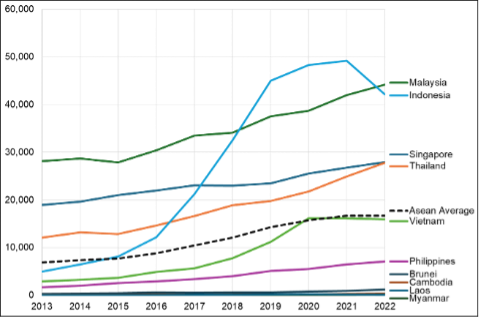VOLUME 17 NUMBER 1 (January to June 2024)

SciEnggJ. 2024 17 (1) 134-147
available online: June 04, 2024
DOI: https://doi.org/10.54645/2024171ZLG-77
*Corresponding author
Email Address: christian.gopez@dlsu.edu.ph
Date received: January 27, 2024
Date revised: April 15, 2024
Date accepted: April 28, 2024
ARTICLE
The research productivity profiles of the Philippines’ most research productive higher education institutions: Analyses by regional clusters and ownership types
University, Manila, Philippines
2Research Communication and Data Analytics Office, De La Salle
University, Manila, Philippines
3Department of Filipino, College of Liberal Arts, De La Salle
University, Manila, Philippines
4Research Management and Coordination Office, De La Salle Lipa,
Batangas, Philippines
Using SciVal, this article examines the bibliometric data of the Philippines’ most research-productive higher education institutions (HEIs) to provide policy recommendations that will collectively boost the research production of the country. The study reveals that 1) NCR leads in the bulk research production, number of authors, citations per paper, percentage of papers in the top 10% journals, percentage of papers with international collaboration, and percentage of papers with corporate collaboration. However, statistically significant differences among these regionally clustered most research-productive Philippine HEIs are limited to bulk research production, number of authors, and percentage of papers with corporate collaboration; 2) Privately-owned HEIs perform much better than publicly-owned HEIs, but the statistical differences are limited only to bulk research production and number of authors; 3) the statistically significant correlations among the bibliometric data are limited to bulk research production and number of authors, bulk research production and number of citations, number of authors and number of citations, number of authors and percentage of papers with institutional collaboration, and number of citations per paper and percentage of papers in top 10% journals. These results underscore that in a knowledge-based economy where research production is recognized as a key element in building the competitive edge of any industrialized country, there is an urgent need for the country’s policymakers and HEI research managers to monitor the trends in the research productivity of the Philippines’ most research-productive HEIs.
© 2025 SciEnggJ
Philippine-American Academy of Science and Engineering